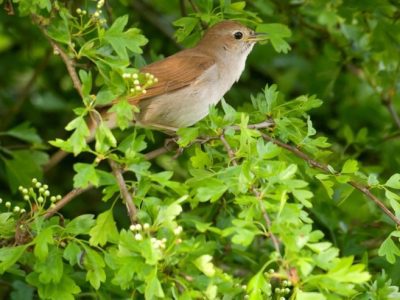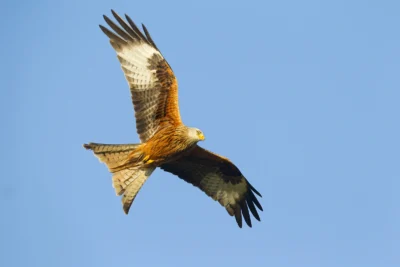Upcoming Guided Walks & Winter Bird Report

Following the Winter Bird walk, Steve Hallam will be leading two guided walks in the coming weeks:
- Spring Flower Walk – starting from St Mary’s Old Church at 2 pm on 26th April, &
- Dawn Chorus, also from St Mary’s Old Church at the somewhat earlier time of 3:45 am on 10th May. This walk affords the opportunity to see Nightingales and many other brilliant dawn choristers. For this walk you should bring warm clothing, stout footwear, a flask of hot drink and a torch.
The links above are to reports from previous walks. We recommend you wear strong boots or wellies since you may well need to walk through long wet grass!
The Friends of Hillhouse Wood is a group of local residents who work with The Woodland Trust to look after this beautiful remnant of ancient woodland. You will also be able to see them at the Village Fete on Saturday 14th June.
Winter Bird Walk 2025
One aspect of observing nature that makes it so compelling is that you never know what you will see and hear. Will it surpass expectations, or disappoint? As mentioned in previous years, this winter bird walk is the one that has the potential to provide ‘thin gruel’. Over the years there seems to be reduced numbers of over wintering birds in this area, especially earlier on in the season. This is why the date of the walk has moved back by a few weeks.
Unduly Pessimistic
This year, I had done some preparatory surveys in the days before the walk, and had seen relatively little. Nevertheless, 14 people came along, which was very pleasing. I thought that I should ‘manage expectations’ but, as it turned out, I was being unduly pessimistic.

By the time we had walked a few yards down the track we had:
- seen a family group of Long-tailed tits,
- a roving ban of Blue tits,
- heard a singing Robin and Chaffinch, and
- had excellent views of a displaying Buzzard.
We stopped to admire the display of Snowdrops that appears every February on the site of the old hurdle maker’s cottage, and then pressed on to the wood. Once there, we heard a singing Wren and Dunnock, also enjoying the Primroses that were just starting to emerge on the bank leading down to the top pond.
Extra Leg

In recent years I have added a leg on to the walk that takes in the fields over towards Kings. And this year doing so proved to be a ‘masterstroke’. A few days previously slurry had been applied to some of these fields, which had attracted around 100 or so gulls – Herring, Black-headed and Common. While we were watching these I noticed one bird that looked different. Closer inspection revealed that this was because it was a Red kite.
Increasingly Common
These are now becoming increasingly common in the area, such that they are starting to lose their ‘surprise’ factor. However one of the group called out that they could see a second bird, which was rather more interesting. They were not too far away, and coming closer, so we took the time to admire their spectacular plumage. One convenient characteristic of Red kite hunting behaviour is that they fly low and slowly, twisting and turning in the air as they search for potential meals, which has the effect of showing off their markings very well. We then realised that there were actually three birds coming towards us, before someone pointed out a fourth. This was definitely a first for me in this part of the world.
Back in the wood

We returned to the wood and wound our way through it, listening out for woodland birds as we went. The predominant species, that announces its presence with constant calling, was the Blue tits; in fact we didn’t see any Great tits at all. I was hoping that we would encounter arguably the most noteworthy resident, which is the Nuthatch – a lovely little bird that feeds on insects in tree bark, often running down tree trunks to find them. They have several calls, one of which is distinctive and which I was hoping to hear. For once, I was not disappointed, as we heard this call ringing out quite close to the party. However in a wood ‘close’ does not necessarily mean ‘visible’. We spent some minutes trying to spot it and, to be fair, some members of the group managed to do so. While we were trying, we realised that there were actually two, and possibly three, different birds calling.
Added Bonus
And an added bonus was that some of group also managed to spot an even smaller tree specialist – the Treecreeper, running up a nearby tree. Not for the first time, in my experience, the bird disappeared behind the trunk before the rest of us could find it – and then never came out again.
All things considered, we enjoyed a fruitful two hours, seeing a good selection of the birds that spend the winter in our part of the world.

